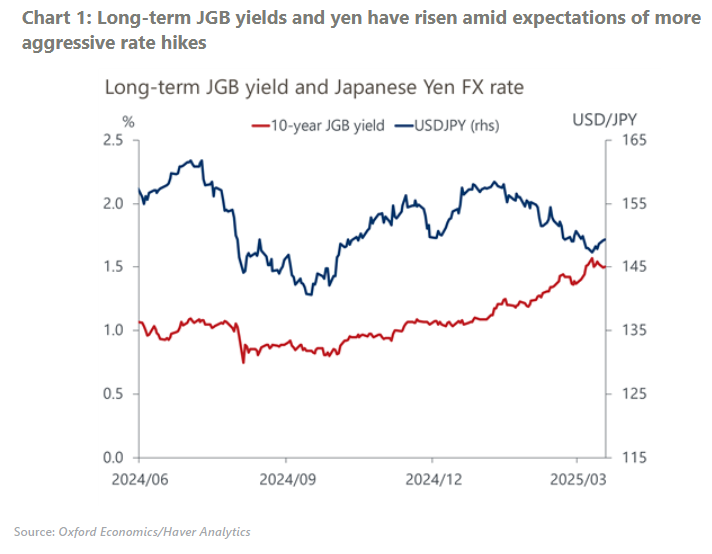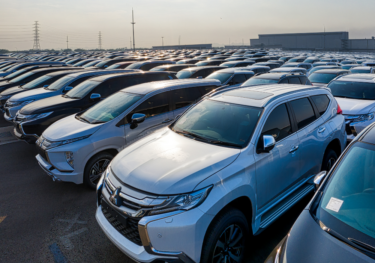Japan’s on course for July rate hike, but risk of June increases
The Bank of Japan (BoJ) kept its policy rate at 0.50% at Wednesday’s meeting, as expected. Despite a marginally higher increase in pay than last year at the first round of the spring wage negotiations, our baseline view is for the BoJ to hike its policy rate only gradually due to concerns about the capacity of small firms to raise wages and the lacklustre rate of consumption.
What you will learn:
- We still expect the next hike will take place at July’s policy meeting, but the BoJ might move in June if wage agreements at small firms exceed expectations. Moreover, risks to the global outlook posed by the shift in US policy and the potential for political uncertainty around the upper house election in July are further motivations for a June hike.
- ”Trump 2.0′ poses various risks to the BoJ policy outlook: high tariffs on autos could have a material effect on growth; higher inflation and interest rates in the US could prompt a sharp fall in the yen and force the BoJ to hike faster; and US pressure on Japan to raise defence spending could increase the neutral rate and destabilise the Japanese government bond (JGB) market.
- We raised our inflation forecast this month to reflect the persistent supply-side inflation pressure on food, especially rice, but didn’t change our policy rate forecast. However, if inflation expectations rise, the BoJ’s terminal rate could turn out to be higher than our projection of 1%.

Tags:
Related Posts

Japan’s tariff turbulence to flatten near-term growth
We've cut our GDP growth forecasts for Japan by 0.2ppts to 0.8% in 2025 and by 0.4ppts to 0.2% in 2026, reflecting higher US tariffs and heightened global trade policy uncertainty. We now forecast that Japan's economy will barely grow over 2025-2026 on a sequential basis.
Find Out More
25% auto tariffs especially painful in Japan and South Korea
US tariffs of 25% on all automobile and auto parts will weigh heavily on the Japanese and South Korean automotive sectors. A GTAP analysis suggests Japanese and South Korean automotive production will each shrink by approximately 7%. The impact is larger than suggested by bilateral trade data, because vehicles assembled in other countries before being shipped to the US will also be affected, dampening domestic auto parts production.
Find Out More
‘Liberation Day’ 24% tariff will limit Japan’s growth
The 'Liberation Day' tariffs, together with separately announced higher tariffs on auto imports to the US, will lead us to cut our growth forecast for Japan. The direct impact of the tariffs will end the modest growth we projected in March, and we now think the economy will barely grow in 2025-2026. This initial estimate does not consider the indirect impact from high trade policy uncertainty and retaliation from other economies.
Find Out More